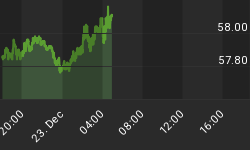The Patient Protection and Affordable Care Act (PPACA) is too complex a piece of legislation for me to provide anything more than a broad-brush analysis of its macro impact to the U.S economy. From my understanding of it, the PPACA primarily represents a redistribution of income from the young and healthy to the under-65 less healthy. This is the implication of mandatory enrollment in a health insurance plan. Young healthy individuals will be induced to enroll in a health insurance plan, which will enlarge the risk pool with less risky participants, thereby lowering the health insurance premiums for the riskier members. The PPACA also raises Medicare and dividend & interest income taxes on upper-income households. This also serves to redistribute income from higher-income households to lower income households. To ardent supply-siders, these income redistributionist effects of PPACA will have a significant negative effect on investment and work incentives and, therefore, will depress potential real economic growth. Of course, these same ardent supply-siders have a difficult time explaining how the tax cuts implemented by the Bush Jr. administration were accompanied by the lowest household saving rate since the early 1930s, relatively weak business capital expenditures, a decline in the labor participation rate and the slowest real GDP growth in decades. But ardent supply-siders seldom let ugly facts get in the way of their beautiful theory.
There has been a lot of discussion about the fact that the increased taxes related to PPACA go into effect before some of expenditures related to the legislation do. I doubt this will have a significant negative macro effect on economic performance. What it will do is change the composition of the funding of federal government expenditures - less borrowing, more taxes. Will this result in lower interest rates, all else the same? Doubtful. Those who are subject to higher tax payments are likely to cut back on their saving in order to "fund" their higher tax payments. The decrease in the supply of credit will offset the decreased Treasury demand for credit, thus, leaving interest rates where they otherwise would have been.
The Congressional Budget Office (CBO) has estimated that PPACA will ultimately reduce the federal budget deficit by $119 billion from 2010 through 2019. How? By cutting federal government spending? No. If I read the CBO's analysis of PPACA in conjunction with the reconciliation legislation correctly (and I am not sure I did), federal government outlays increase by $900 billion in the ten years ended 2019. As the late Milton Friedman argued, the real economic cost of government is not how the government funds itself, but how much funding the government demands. In other words, the real economic cost of government is not the government's deficit, but the government's spending. The logic of this is that the more the government spends, the more productive resources the government controls and/or directs. At any point in time, there is a finite amount of productive resources. If the government's share of these resources increases, the private sector's share must decrease. Then the issue becomes, which sector uses resources more efficiently - the government sector or the private sector? If the answer is the private sector, then the economy's long-run potential rate of growth will be adversely affected by an increase in government spending.
So, the macro effect of PPACA on economic performance will be determined by whether the shift of $900 billion of productive resources from the private sector to the government sector over the next ten years will adversely affect labor productivity and technical progress and by how much. I wish I could give a definitive answer to this. But I am not smart enough to because the complexity is beyond my capability. For example, one could argue that PPACA would result in a healthier work force than otherwise. A healthier work force, all else the same, would be a more productive workforce. One could also argue that the increased government spending associated with PPACA would have been spent by the private sector on health care, just less efficiently - e.g., emergency room care vs. preventive care afforded by PPACA. One thing I am relatively confident in saying is that the long-term economic growth implications of PPACA are not related to its effects on the federal budget deficit or tax revenues. The answer lies in the implications of increased government spending.
















